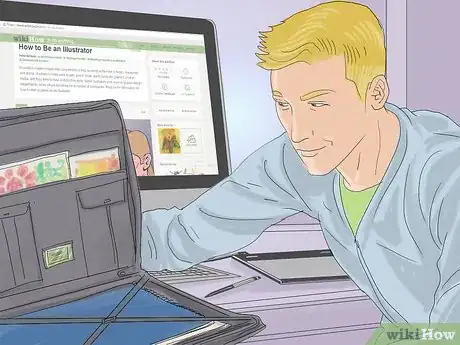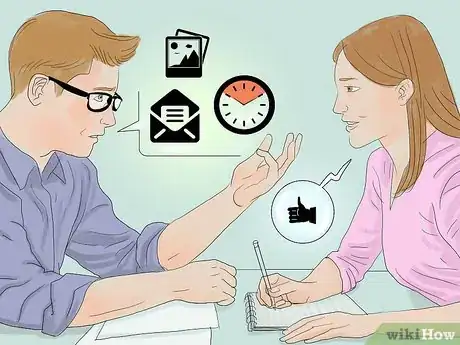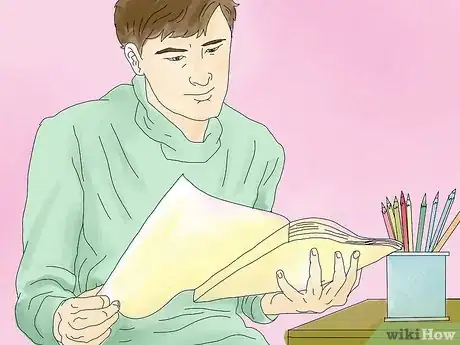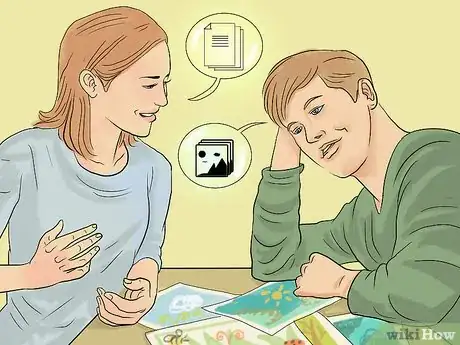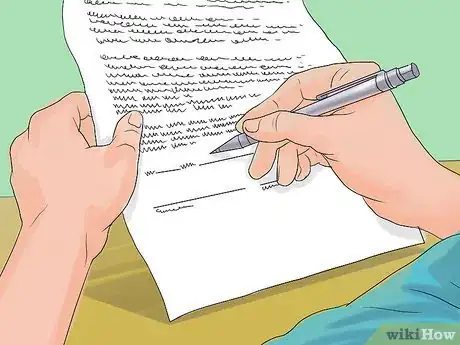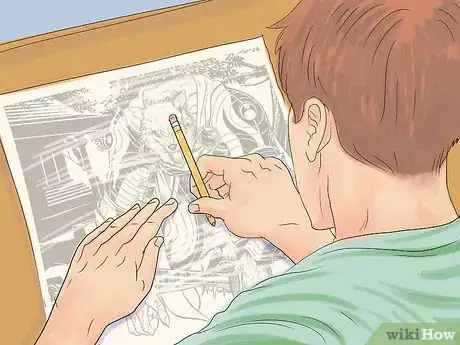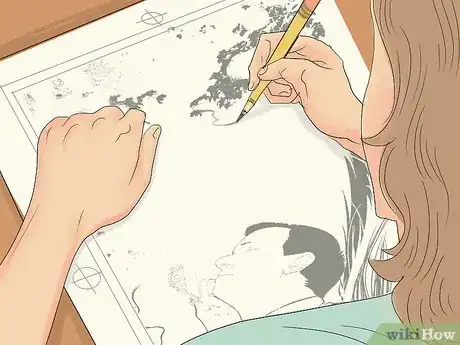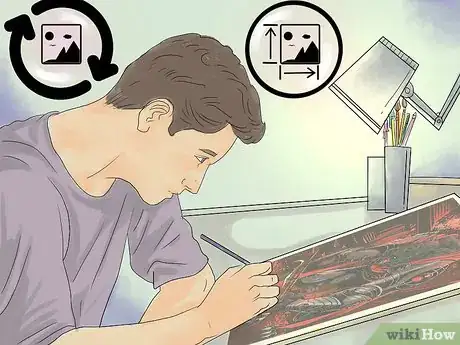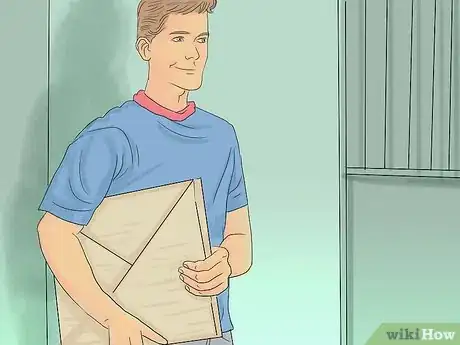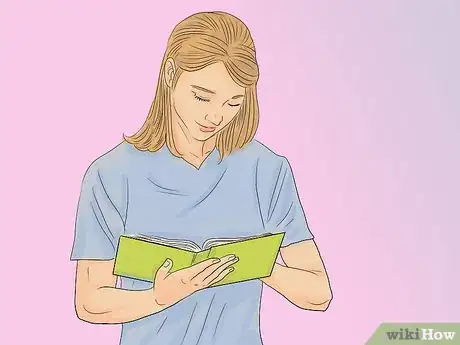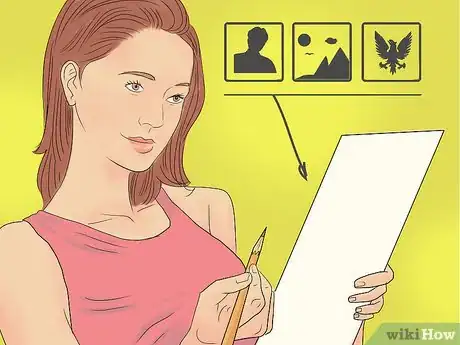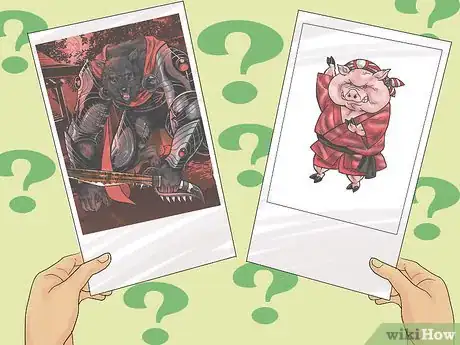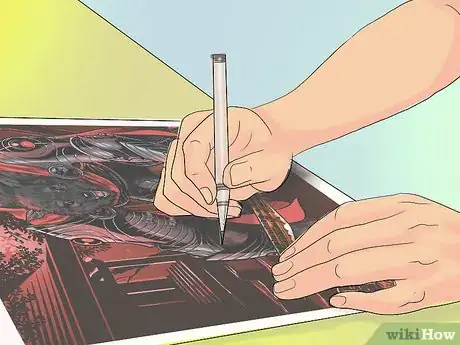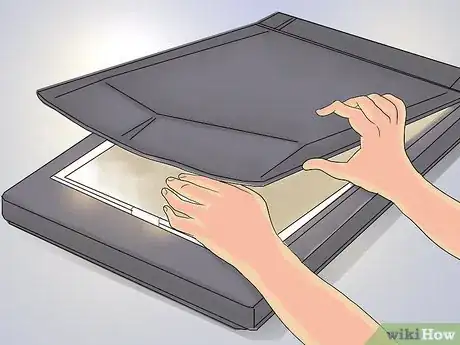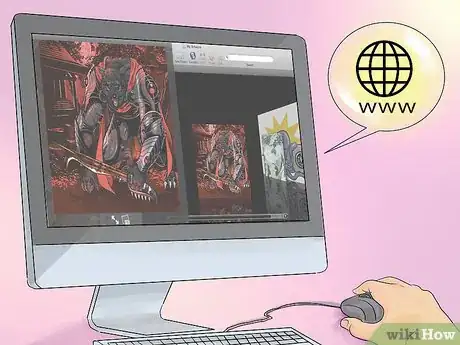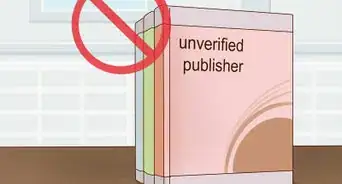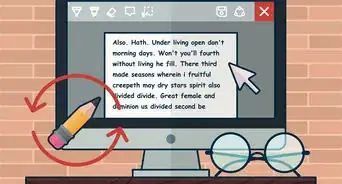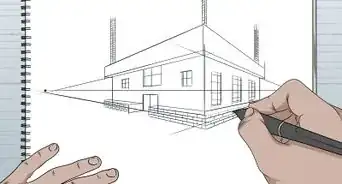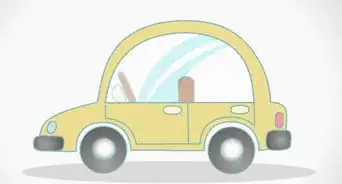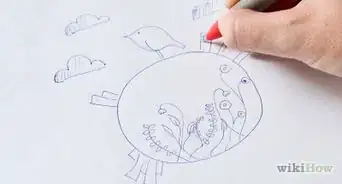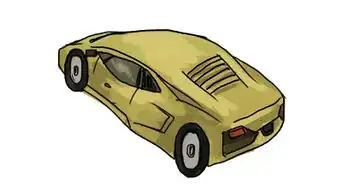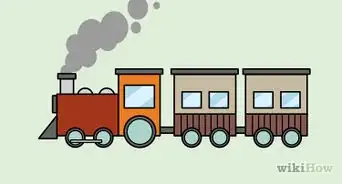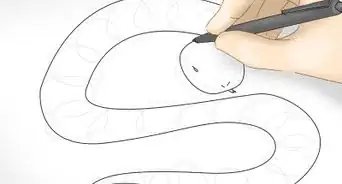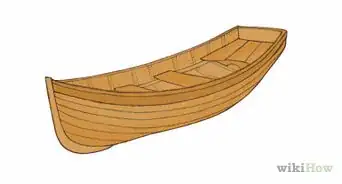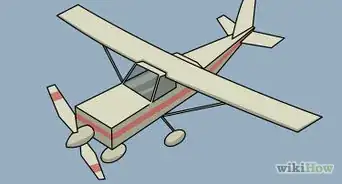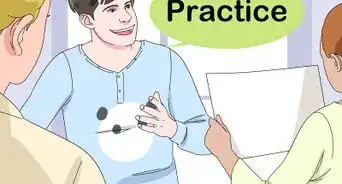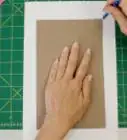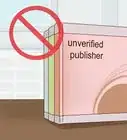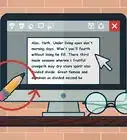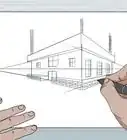This article was co-authored by Kieren Dutcher. Kieren Dutcher is a Professional Artist and a Teaching Artist at the NIAD Art Center in Richmond, California, and other venues around the Bay Area. With 30 years of experience, she specializes in colorful illustrations inspired by folk art, nature, and color. Kieren earned her Master of Education in Art Education from San Francisco State University and her BFA from the California College of the Arts. Her work has been published by St. Martin's Press, Uppercase Magazine, Highlights Magazine, in hospitals, and on TV. Her picture book Chinese and English Nursery Rhymes: Share and Sing in Two Languages (2010) won best book of the year from the Chinese American Library Association.
This article has been viewed 84,903 times.
Are you a natural artist? Good with a pencil or paints? Then you may want to illustrate a book someday. There are several steps you can take to successfully accomplish this goal.
Steps
Illustrating a Book for Money
-
1Find a job. In order to be paid for your work as a professional illustrator you will need to go through the, often challenging, process of finding work.
- While you are searching for paid work, it may be valuable to do unpaid jobs which will help you build up for portfolio.
- If you wish to be paid for your work, try contacting anyone you know in the business of publishing or editing books to see if they can help point you in the right direction. You can also contact a publishing company by phone or letter; in doing this, you may get a chance to have your portfolio considered. You are likely to be rejected many times, so be persistent!
-
2Meet with the art director. This may be via phone or email, or it may be in person. Regardless, this is the time to agree upon deadlines, any special requirements of the author, your timetable and availability, or any other questions you might have.[1]
- You will repeat this step many times throughout the process. You will need to show the author/s and publishers samples of what you have so far in order to agree that it is moving in the right direction.
Advertisement -
3Read drafts. When you finally do find someone in need of your services, they will give you either one or many options of different novels and books. You must, of course, read a draft or if the story is a reprint read the original book previous to the reprint. You may be lucky enough to have the opportunity do a cover or dust-jacket design. You must make sure you thoroughly understand the plot and its characters; remember their emotions are expressed through your art.
-
4Meet with the author. If you have agreed that you enjoy the story, and that you would like to illustrate it, you should meet with the author to discuss and agree upon a number of things such as: the cover (and whether or not you will illustrate it), which pages should be illustrated, what kind of media you will use (i.e. what kind of illustrations you are going to make), etc.
-
5Sign a contract. After you've met with the author and agreed on the details, you will need to sign a contract that specifies all the details of your agreement with the publishing company and/or author.[2]
- Make sure the contract includes pertinent information such as when you should be finished and how much you should be paid.
- Make sure to get a copy of the contract which includes the signatures of all involved parties and the date it was signed.
-
6Begin the process of illustration. How this step proceeds depends on how you, as an artist, prefer to work. Some illustrators like to begin with making some pencil sketches of the ideas they have in their head, comparing them and getting feedback from friends and family.[3] While others just free draw. However you do it, you need to start coming up with a solid idea of what each character will look like, and what the style of the illustrations will be.
- Your method for illustrating may be completely different, and that is OK. If you are successfully creating illustrations, there is no reason to try to change anything.
-
7Refine your drawings. Once you have come up with a sketch that fits with the guidelines of the publisher (these will be different for every publisher, and probably every job), you will need to come up with rough sketches for each required page that you will review with the author/publishers.
- Sometimes it can be hard to receive feedback from others, especially if it is critical; however, you should try not to take this personally. They only want the book to be as good as it can be.
-
8Revise your illustrations. Based on the feedback of the authors you should do your best to revise them so that all parties can be happy with the end product.[4]
- Be sure that the illustrations will fit the dimensions of the book! If you draw the image too big, parts of the image will be missing from the book, and the effect may not be the same.[5]
-
9Finish your illustrations. After what is likely to be several rounds of feedback on your work, you will be able to complete a final illustration. You will then send these to the publisher, where the sketches and the story will be put together to create the final product![6]
Illustrating a Book for Fun
-
1Find a book you want to illustrate. Perhaps you’ve already got a story in mind, or maybe not. If not, read several different books and pick one that you really enjoy. If the story paints a vivid picture in your mind, it will be easier to come up with sketches.
- Regardless of what book you choose, make sure you spend plenty of time reading and analyzing the story. Try to imagine what the author pictured when it was written. Try to imagine how you would draw the picture as you are reading and re-reading the story.
- Another option is to write a story of your own. Many writers enjoy the process of both writing and illustrating. One advantage of this is, that if you write your own story, you know exactly what the author is trying to portray, which makes it easier to portray the story in images.
-
2Begin sketching images. After you’ve chosen or written the book you want to illustrate you can begin sketching pictures of the setting, the scenery, etc.
- It may be helpful to take notes of what you've sketched so far, with what characters, and in what settings so that you can keep track throughout the book. Especially if the book is a long one, it may be hard to remember the details of what you sketched in an earlier part of the book.
- If you’re not sure exactly what the characters and style should look like, try sketching out several different ideas so you can see them on paper (or computer).
-
3Decide on a style. Once you’ve completed some rough sketches of different ideas you have, you can choose a style that you will stick with throughout the book.
- Since this is for your own enjoyment, the style can be any you choose. However, it is often a good idea to choose a style that matches with the book. For example, if the book is about drama and murder, you probably won't be using a lot of bright colors. Instead, in this case, you might consider using darker, more muted shading, and less cartoonish characters.
- If you're illustrating a children's book, on the other hand, you don't want to draw characters that will frighten children.
-
4Draw and redraw each image. Since you are not doing this as a paid job, you can proceed with the process of illustration as you like. Draw images for each scene you find interesting, or for each page of the book. Draw and redraw the scenes as much as you like. Add color or keep the illustrations as simple pencil sketches. These choices are completely yours.
-
5Scan your images into the computer. If you have drawn all your images by hand, you can scan the images into your computer where you can add the images to the story.
- Alternatively, if you have chosen a book that you are unable to edit on the computer, you can simply put the drawings into the book where you wanted to include them. This way they will be in the story next time you read it.[9]
-
6Consider sharing your work. If you think you might one day want to become a published illustrator, consider sharing your work. These days, it is very common for illustrators to post their portfolio online.
- There are many websites that will let you create your own blog for free. Simply search on Google for "free blogging websites". Make sure the site you choose will easily allow you to share your link with friends!
- You can also create a physical portfolio if you wish. There are many ways to do this, but if you plan to present it to potential clients, make sure that it looks clean and professional.
Community Q&A
-
QuestionHow do I scan my drawing into the computer?
 Community AnswerGet a scanner or printer. You can get some pretty cheap off of Amazon or from Staples. Save the drawing and then do whatever you want with it. If you already have a scanner and you don't know hot to use it, search for the instructions online. If you're on a budget, you can just take a picture of your drawing.
Community AnswerGet a scanner or printer. You can get some pretty cheap off of Amazon or from Staples. Save the drawing and then do whatever you want with it. If you already have a scanner and you don't know hot to use it, search for the instructions online. If you're on a budget, you can just take a picture of your drawing. -
QuestionIf I'm the artist, what medium do I use for the art? I am a painter; do I need to paint it on paper vs. canvas?
 Kim GTop AnswererYou can use whatever medium best suits you. As long is your original artwork is in a format that can be represented in a book, there should be no problem using canvas.
Kim GTop AnswererYou can use whatever medium best suits you. As long is your original artwork is in a format that can be represented in a book, there should be no problem using canvas. -
QuestionIf I'm publishing a book on Amazon, do I just place an image on the front for the cover?
 Community AnswerYes, but try to be creative. Find something that fits the book.
Community AnswerYes, but try to be creative. Find something that fits the book.
Warnings
- If you are working as a paid illustrator, take the wishes of the author/s and publisher into consideration. While you should use your own personal style, you should also listen to feedback and suggestions. If you gain a reputation as an illustrator who is difficult to work with, you may not get many jobs in the future.⧼thumbs_response⧽
References
- ↑ http://www.jimharrisillustrator.com/ChildrensBooks/illustratingstarttofinish.html
- ↑ http://www.jimharrisillustrator.com/ChildrensBooks/illustratingstarttofinish.html
- ↑ http://www.jimharrisillustrator.com/ChildrensBooks/illustratingstarttofinish.html
- ↑ http://www.artistsandillustrators.co.uk/how-to/family-art/281/how-to-illustrate-a-childrens-book
- ↑ http://www.jimharrisillustrator.com/ChildrensBooks/illustratingstarttofinish.html
- ↑ http://www.artistsandillustrators.co.uk/how-to/family-art/281/how-to-illustrate-a-childrens-book
- ↑ http://www.jimharrisillustrator.com/ChildrensBooks/illustratingstarttofinish.html
- ↑ http://www.creativebloq.com/illustration/5-tips-illustrating-childrens-book-5132983
- ↑ http://fun.familyeducation.com/activity/reading/39487.html
